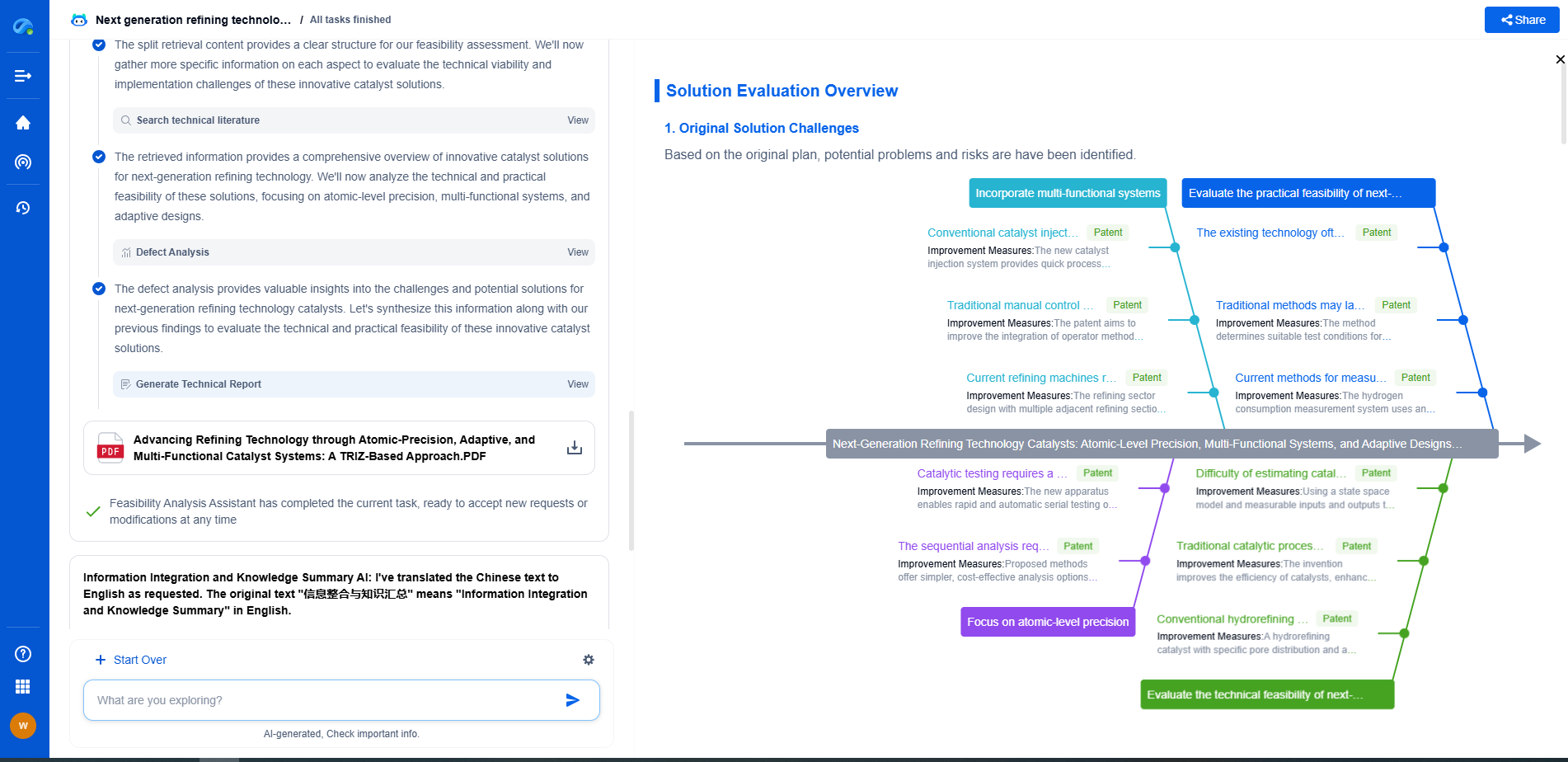Which Electrical Instruments Do You Need for EMC Testing in Wearables?
JUL 9, 2025 |
Understanding EMC Testing
Before diving into the specific instruments, it is essential to understand what EMC testing entails. EMC testing assesses two main aspects: emissions and immunity. Emission testing ensures that your device does not emit electromagnetic interference (EMI) that could affect other devices. Immunity testing ensures that your device can function correctly even when subjected to electromagnetic disturbances from external sources.
Essential Instruments for EMC Testing
1. Spectrum Analyzer
A spectrum analyzer is a vital instrument in EMC testing. It helps identify and measure the electromagnetic emissions from a wearable device. By analyzing the frequency spectrum, engineers can pinpoint the frequencies at which emissions occur and assess their magnitude. This information is essential for ensuring that emissions levels are within regulatory limits.
2. EMI Receiver
An EMI receiver is specifically designed for EMC testing and works similarly to a spectrum analyzer, but with higher sensitivity and precision. It is used to measure electromagnetic emissions in both conducted and radiated forms. Its ability to cover a wide frequency range makes it indispensable for measuring emissions from wearables, which may operate on various frequencies.
3. Signal Generator
Signal generators are crucial for immunity testing. These devices generate electromagnetic waves at specified frequencies and amplitudes to simulate potential sources of interference. By exposing the wearable device to these controlled signals, engineers can assess its ability to withstand external electromagnetic disturbances.
4. Anechoic Chamber
An anechoic chamber is a specialized room designed to absorb reflections of electromagnetic waves. It provides an ideal environment for EMC testing by eliminating background noise and external interference. Testing wearables inside an anechoic chamber ensures the accuracy and repeatability of the results.
5. Near-Field Probes
Near-field probes are used to measure electromagnetic fields in close proximity to the wearable device. They are crucial for identifying specific components or regions of the device that are responsible for emissions. By using near-field probes, engineers can isolate issues and make targeted design adjustments to reduce emissions.
6. LISN (Line Impedance Stabilization Network)
A LISN is used in conducted emissions testing to measure the EMI present on power lines. It provides a stable impedance and separates the noise generated by the device from the power source. This tool is essential for ensuring that wearables do not introduce unacceptable levels of interference onto the power grid.
7. Oscilloscope
An oscilloscope is not specifically an EMC instrument but plays a supporting role in testing. It allows engineers to visualize electrical signals in the time domain, providing insights into the behavior of a circuit. During EMC testing, oscilloscopes can help diagnose unexpected signal disturbances and verify the integrity of the device's operation under test conditions.
Conclusion
EMC testing is a vital step in the development of wearable technology, ensuring their reliable operation in diverse environments. The instruments outlined above—spectrum analyzers, EMI receivers, signal generators, anechoic chambers, near-field probes, LISNs, and oscilloscopes—are essential tools in achieving a thorough EMC assessment. By investing in the right equipment and conducting comprehensive testing, developers can enhance the performance and marketability of their wearable products, ensuring they meet both regulatory requirements and consumer expectations.
Navigating the evolving world of electrical measurement—from high-precision signal integrity to advanced test protocols like BERT or TDR—demands more than just expertise; it demands smart tools.
Patsnap Eureka empowers you to keep up—by turning complex patent data, technical parameters, and industry signals into actionable insight. It’s your AI partner for exploring what’s next in test, measurement, and electrical diagnostics.
💡 Try Patsnap Eureka for free and see how it transforms the way you work with electrical measurement technologies.
- R&D
- Intellectual Property
- Life Sciences
- Materials
- Tech Scout
- Unparalleled Data Quality
- Higher Quality Content
- 60% Fewer Hallucinations
Browse by: Latest US Patents, China's latest patents, Technical Efficacy Thesaurus, Application Domain, Technology Topic, Popular Technical Reports.
© 2025 PatSnap. All rights reserved.Legal|Privacy policy|Modern Slavery Act Transparency Statement|Sitemap|About US| Contact US: help@patsnap.com

